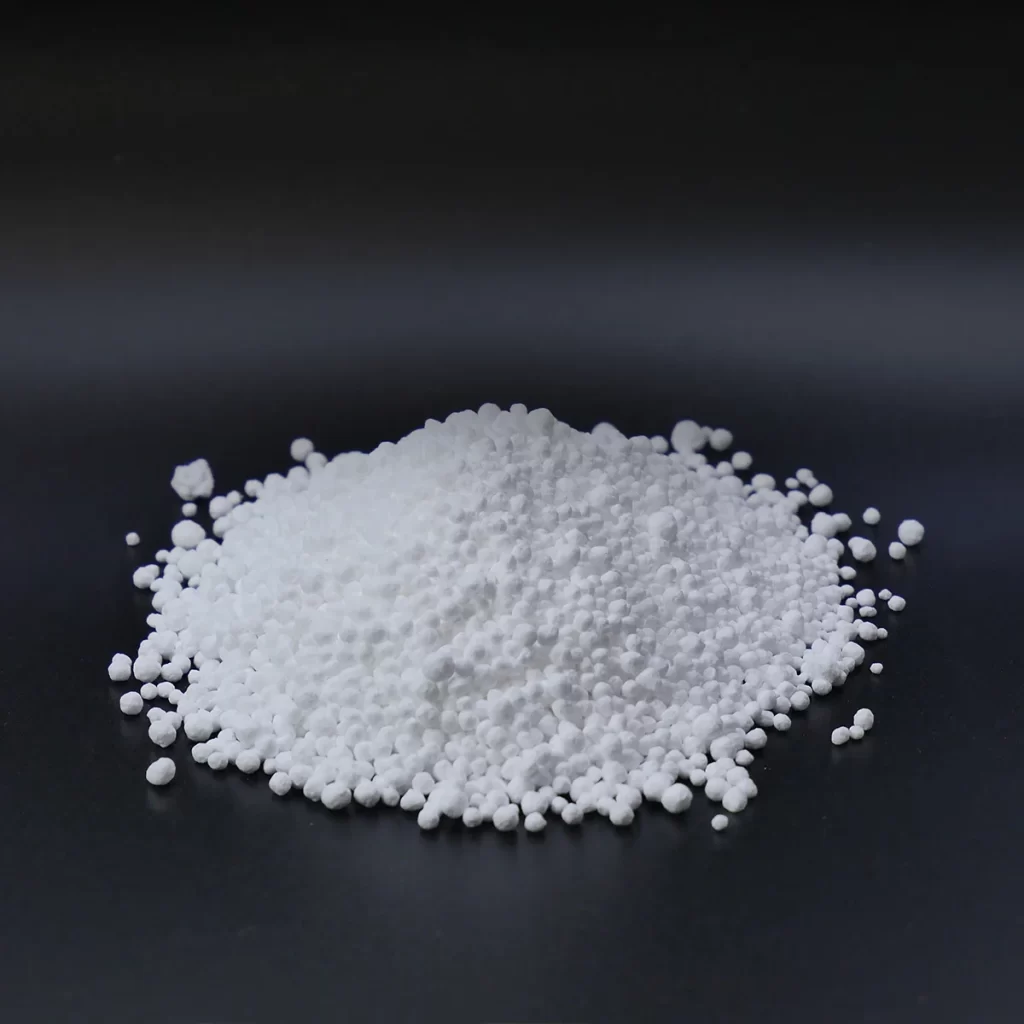
In every chemical reaction, some substances get used up completely while others are left behind.
This leftover material is what we call the excess reagent.
In this lesson, we’re not just identifying the limiting reagent — we’re calculating exactly how much of the excess remains.
That’s a critical skill if you’re planning to reuse materials, manage waste, or fine-tune reaction efficiency.
Let’s solve a classic problem: You are given 1.5 grams of calcium chloride (CaCl₂) and 15 milliliters of 0.1 M silver nitrate (AgNO₃).
Your task is to find out how many moles of calcium chloride remain unreacted after this reaction is complete.
Step 1: Write the balanced chemical equation
Start with the reaction:
CaCl₂ + 2 AgNO₃ → 2 AgCl + Ca(NO₃)₂
From this equation, we learn that 1 mole of calcium chloride reacts with 2 moles of silver nitrate to form silver chloride and calcium nitrate.
This gives us a mole ratio of 1:2 for CaCl₂ to AgNO₃.
Step 2: Convert the mass of CaCl₂ to moles
We are given 1.5 grams of CaCl₂.
To convert this to moles, we need the molar mass of calcium chloride.
Calcium (Ca) has a molar mass of 40 g/mol, and each chlorine atom (Cl) has a molar mass of 35.5 g/mol.
There are two Cl atoms in the formula, so:
Molar mass of CaCl₂ = 40 + (2 × 35.5) = 111 g/mol
Now calculate the moles:
Moles of CaCl₂ = 1.5 ÷ 111 = 0.0135 moles
That’s how much calcium chloride is available to react.
Step 3: Convert the volume of AgNO₃ to moles
We are given 15 mL of a 0.1 M AgNO₃ solution.
Since molarity is moles per liter, we convert volume from milliliters to liters:
15 mL = 0.015 L
Now apply the molarity formula:
Moles of AgNO₃ = 0.1 × 0.015 = 0.0015 moles
That’s the total amount of silver nitrate we have.
Step 4: Determine the limiting reagent
The balanced equation tells us that 1 mole of CaCl₂ reacts with 2 moles of AgNO₃.
So for 0.0015 moles of AgNO₃, we calculate the required moles of CaCl₂:
Required CaCl₂ = 0.0015 × (1 ÷ 2) = 0.00075 moles
We’re starting with 0.0135 moles of CaCl₂, so we have more than enough.
This confirms that silver nitrate is the limiting reagent and calcium chloride is in excess.
Step 5: Calculate the amount of excess CaCl₂
Since only 0.00075 moles of CaCl₂ are needed, we subtract that from the total available:
Excess CaCl₂ = 0.0135 – 0.00075 = 0.01275 moles
That’s the amount of calcium chloride left unreacted after the silver nitrate is fully used up.
So, your final answer is:
0.01275 moles of calcium chloride remain as excess.
Step 6: Why is this useful in the real world?
Knowing how much excess reagent remains helps chemists optimize reactions.
In industrial chemistry, excess reactants can be filtered, purified, and reused, saving costs.
In pharmaceutical production, knowing what remains after a reaction can help with quality control and waste management.
And in green chemistry, tracking excess allows us to reduce environmental impact by minimizing unnecessary use of chemicals.
Step 7: A real-world analogy to cement the concept
Think of making tacos.
Each taco needs 1 shell and 2 spoonfuls of filling.
For example, if you have 6 shells and only 5 spoonfuls of filling, you’ll only make 2 full tacos.
You’ll have 4 shells left over.
Here, the filling is the limiting reagent, and the taco shells are in excess.
In our chemical problem, AgNO₃ is the filling, and CaCl₂ is the leftover taco shell.
Step 8: Quick check with ratio comparison
Want to double-check without writing out the whole equation again?
Divide each reactant’s mole amount by its coefficient:
- CaCl₂: 0.0135 ÷ 1 = 0.0135
- AgNO₃: 0.0015 ÷ 2 = 0.00075
The smaller number (0.00075) belongs to the limiting reagent (AgNO₃).
The larger value (0.0135) confirms that CaCl₂ is in excess.
Quick, clean, and it matches what we already calculated.
Step 9: Common mistakes to avoid
Many students mistakenly compare grams directly.
However, grams alone don’t show you how much of a substance is available on a particle level.
That’s why you must always convert mass or volume to moles.
Also, don’t forget to convert mL to L when working with molarity.
Another frequent mistake is reversing the ratio — using 2:1 instead of 1:2 — which completely changes the outcome.
Lastly, always read the balanced equation carefully before applying ratios.
Step 10: Beyond the classroom — where you’ll use this skill
You can use this kind of calculation in:
- Analytical chemistry, to plan precise quantities
- Pharmaceuticals, to measure residual compounds
- Environmental labs, to check excess reactants in water treatments
- Manufacturing, to reduce chemical waste and improve safety protocols
In food science, you control flavors, textures, and shelf life by knowing left overs in a reaction.
Final Wrap-Up
We started with 1.5 grams of CaCl₂ and 15 mL of 0.1 M AgNO₃.
First, you converted both to moles — 0.0135 mol of CaCl₂ and 0.0015 mol of AgNO₃.
Based on the 1:2 mole ratio from the equation, you determined that AgNO₃ is the limiting reagent.
You need only 0.00075 moles of CaCl₂ to fully react with it.
After the reaction, 0.01275 moles of calcium chloride remain unreacted, and that’s your excess.
This is stoichiometry in action — a perfect balance of math, logic, and molecular understanding.
Want more confidence solving problems like this?
Visit website to get access to video tutorials, practice quizzes, and step-by-step walkthroughs that explain every concept in clear, simple terms.
You’ll go from guessing to calculating with confidence.
